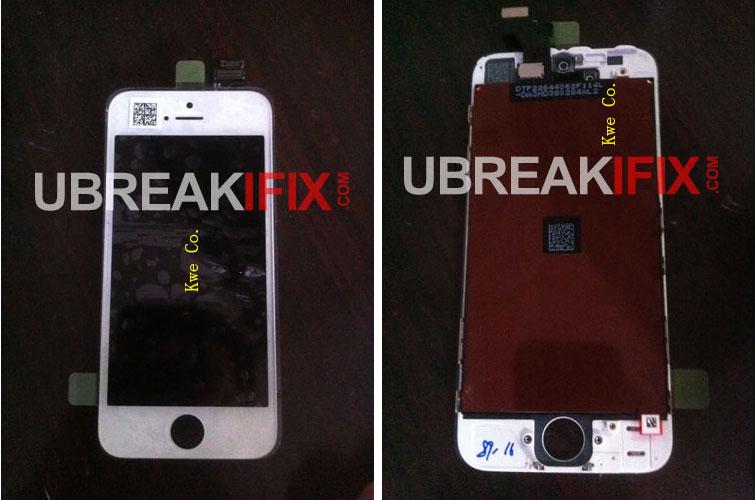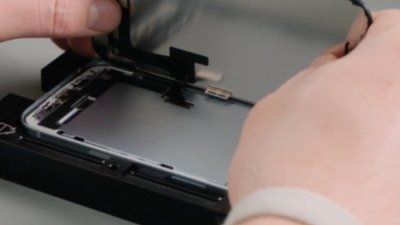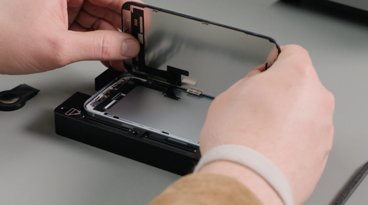While the images from repair website UBreakiFix.com (via MacRumors) don't reveal much as the unit is not powered on, they are some of the first to show the smartphone's larger display. Although no conclusive findings can be made from the photos, the part's connectors, shown in an additional close-up shot, appear to resemble the layout of previous iPhone flex cables.
Apple is widely expected to be increasing the size of the sixth-generation iPhone's screen to 4-inches, up from the current 3.5-inch displays seen on the device since the first model launched in 2007. Although the unit's resolution has increased in the intervening years, including the move to Apple's high-resolution Retina display with 2010's iPhone 4, the physical dimensions of the screen have not changed.
Purported photos of the next-gen iPhone's display assembly. | Source: UBreakiFix.com
A switch to a 4-inch display would mark a 26 percent bump in real estate, though some have speculated Apple may keep the horizontal resolution at 640 pixels while "stretching" the vertical to 1,136 pixels. In that particular configuration, the iPhone would be able to offer 16-by-9 aspect ratio content while retaining one-handed operation. Recent "leaks" provide for this theory, including photos of a "fully-assembled" next-gen iPhone and what is thought to be the new handset's display shielding.
Apple is expected to debut the next-generation iPhone at an as-yet-unannounced special event on Sept. 12, with rumors pointing to pre-orders beginning the same day ahead of a Sept. 21 U.S. launch.
 AppleInsider Staff
AppleInsider Staff



 Andrew Orr
Andrew Orr
 Malcolm Owen
Malcolm Owen

 William Gallagher
William Gallagher


 William Gallagher and Mike Wuerthele
William Gallagher and Mike Wuerthele
 Christine McKee
Christine McKee


-m.jpg)






63 Comments
These next few weeks are gonna be a real…
I get an increase of 18% not 26% on the one plane.
I'm pretty sure that is the Galaxy IV.
I'm hella excited for the next iPhone, anyone know the details on it's camera? I be tit's a lot better than the pretty great one in the 4S. :D
Well the assembly in the photo clearly has a 16:9 screen area.